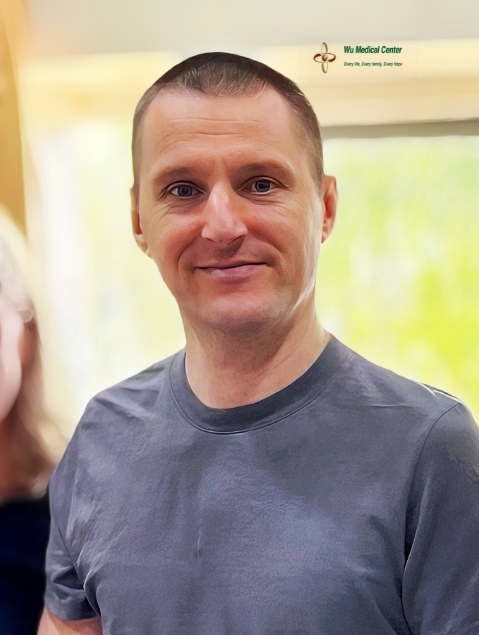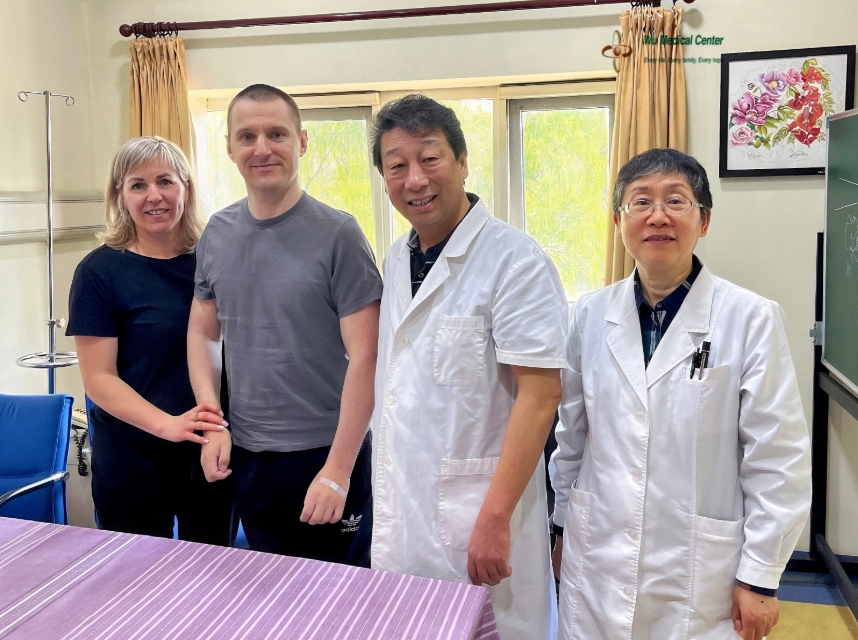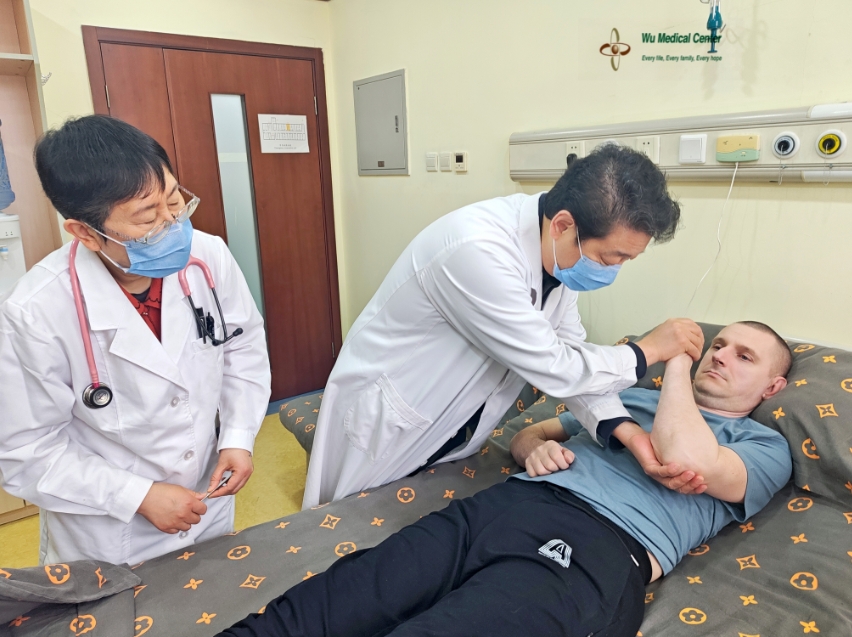Leanid Liauchuk-Sequelae of spinal cord injury-(Belarus)
 Patient Name: Leanid Liauchuk
Patient Name: Leanid Liauchuk
Gender: Male
Age: 43 years
Nationality: Belarus
Diagnosis: Sequelae of spinal cord injury
Before Treatment:
The patient was admitted with the chief complaint of “motor impairment in all four limbs for 3 years following cervical injury,” diagnosed as “sequelae of spinal cord injury.” He has no history of chronic diseases such as diabetes, hypertension, or coronary heart disease.
Physical Examination Upon Admission:
The patient’s blood pressure was 123/80 mmHg, heart rate 56 beats/min, and respiration 20 breaths/min. He had an average nutritional status. Breath sounds in both lungs were clear with no rales. Heart sounds were strong and rhythmic, with no murmurs in any valve areas. The abdomen was soft, and there was no enlargement of the liver or spleen. There was no edema in both lower limbs.
Neurological Examination:
The patient was alert and spoke fluently. His memory, calculation, and orientation were normal. His pupils were equal and reactive to light, with a diameter of 3 mm, and eye movements were full. His forehead wrinkles were symmetric, and his tongue was centered with no deviation when protruded. Neck stiffness was not present, and he had fair strength in neck rotation and shoulder elevation. The proximal muscle strength of the left upper limb was graded 3, distal muscle strength 2+, wrist strength 2+, and grip strength 2+. The proximal muscle strength of the right upper limb was graded 2+, distal strength 2; wrist strength 2-, and grip strength 1. Muscle strength in the lumbar and dorsal areas was graded 2+. Muscle strength in both lower limbs was graded 3. There was significant increased muscle tone in all limbs. The hypothenar and interosseous muscles in both hands and the muscles in both legs showed moderate atrophy. Reflexes were present in the upper abdominal wall bilaterally, with absent middle and lower abdominal wall reflexes. Tendon reflexes were present in both upper limbs and hyperactive in both lower limbs, with clonus visible in all four limbs. Sensation below the T2 segments was reduced, and sensation was absent below L1. Positive pathological signs were present in both lower limbs. Meningeal signs were negative.
Treatment Process:
The patient was clearly diagnosed with “sequelae of spinal cord injury.” He received nerve stem cells and mesenchymal stem cells for spinal cord nerve repair treatment, assisted by CAST therapy to improve circulation, nourish nerves, and regulate immunity, along with comprehensive rehabilitation therapy.
After Treatment:
The patient showed significant improvement in motor function, with increased strength in all four limbs and improved muscle tone: left upper limb proximal muscle strength was graded 4, distal strength 3+, wrist strength 3+, and grip strength 3+. The right upper limb proximal muscle strength was graded 3+, distal strength 3; wrist strength 3-, and grip strength 3-. Lumbar and dorsal muscle strength was graded 3+, and muscle strength in both lower limbs was graded 4. He could slowly complete the finger-to-finger test with his left hand, and his grasp and extension function improved significantly. Finger flexibility increased, allowing him to lift a cup to drink water; grasp and extension function improved in his right hand as well. Clonus in all four limbs decreased significantly, and the increased muscle tone was markedly reduced, enhancing his flexibility. He could independently stand for 2 minutes and walk several meters using a walker. Abdominal wall reflexes in the upper, middle, and lower regions were all present. Sensation showed significant recovery, with sensory deficits reduced to the L4 level. Muscle mass throughout the body increased. His energy and physical endurance improved significantly.



